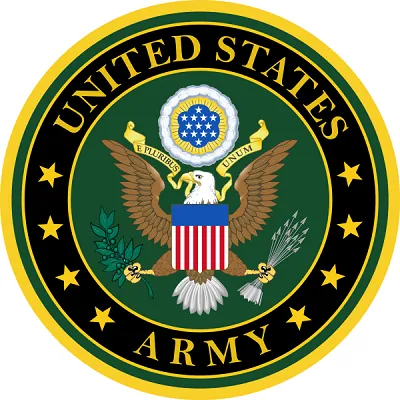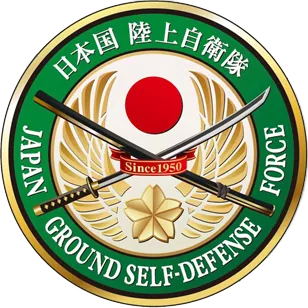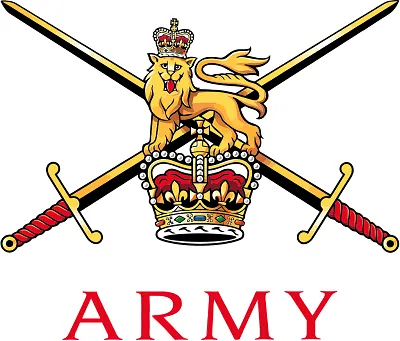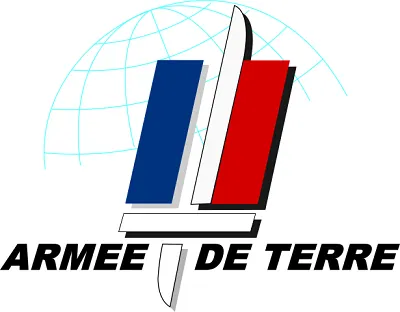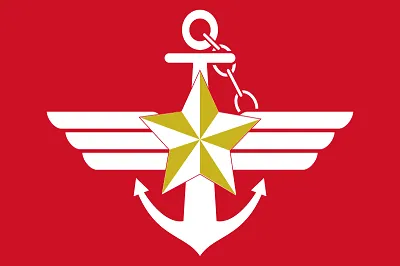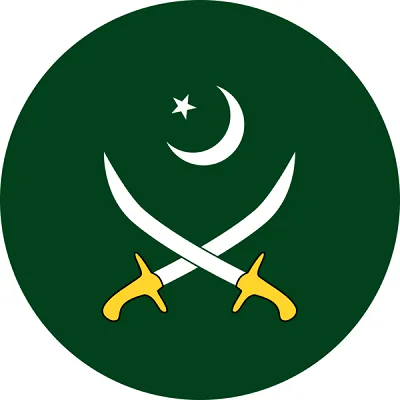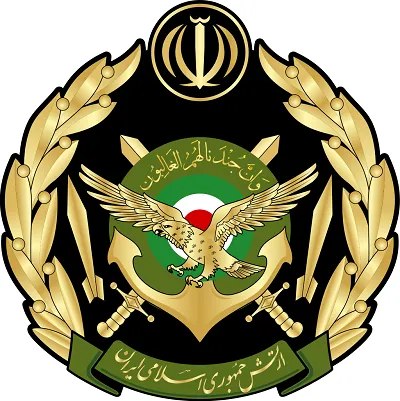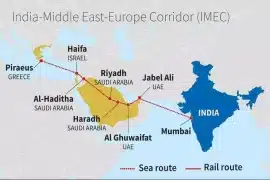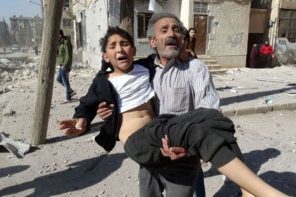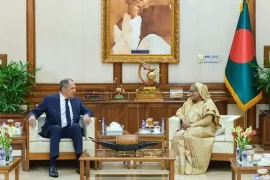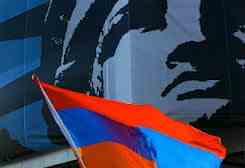In an ever-changing world, the strength and capabilities of a nation’s army are crucial for maintaining global security and protecting national interests. From advanced weaponry and cutting-edge technology to highly trained personnel, the power of an army is a key indicator of a nation’s ability to project force and maintain a strong defense posture. In this article, we will explore the ten most powerful armies in the world, considering their resources, capabilities, and strategic influence.
Ranking criteria for the most powerful armies
Ranking the most powerful armies in the world requires careful consideration of various criteria. Here are some commonly used factors to assess power of an army:
Personnel Size: The number of active-duty soldiers within an army indicates its manpower and capacity for engagement in conflicts or peacekeeping operations.
Training and Professionalism: Well-trained soldiers with advanced skills and effective command structures are essential for a powerful army. Factors such as training programs, combat experience, and professionalism contribute to the overall effectiveness of an army.
Equipment and Technology: The availability of modern and advanced weaponry, including tanks, artillery, infantry weapons, and communication systems, enhances an army’s combat capabilities.
Combat Experience: Past performance and experience in real-world operations, conflicts, or peacekeeping missions provide valuable insights into an army’s effectiveness and adaptability in different scenarios.
Logistics and Support: Adequate logistical capabilities, including transportation, supply chains, medical support, and maintenance infrastructure, are crucial for sustaining military operations.
Specialized Units: The presence of specialized units, such as special forces, airborne troops, or rapid response teams, showcases an army’s versatility and ability to handle diverse military challenges.
Geographical Reach: An army’s ability to project power beyond its borders and engage in international operations signifies its global influence and expeditionary capabilities.
Defense Budget: Adequate funding and investment in military infrastructure, equipment modernization, and personnel welfare contribute to the overall strength of an army.
Force Multipliers: The inclusion of force multipliers such as artillery systems, air defense capabilities, intelligence gathering, and reconnaissance assets amplifies an army’s operational effectiveness.
Alliances and Partnerships: Collaborative military agreements, alliances, and joint exercises with other powerful armies enhance an army’s collective defense capabilities and geopolitical influence.
It’s important to note that the ranking of the most powerful armies may vary depending on the specific methodology and weighting assigned to each criterion. Additionally, geopolitical context and regional dynamics can influence an army’s perceived power and influence.
List of the most powerful armies in the world
The 10 most powerful armies in the world are United States Army, Russian Armed Forces, The People’s Liberation Army Ground Force, Indian Army, Japan Ground Self-Defense Force, British Army, Armée de Terre, Republic of Korea Army, Pakistan Army and the Islamic Republic of Iran Army
United States Army, the most powerful army in the world
The United States Army, the largest and most powerful ground force in the world, has a rich and storied history that traces back to the American Revolutionary War. Since then, the Army has played an instrumental role in safeguarding the United States and its allies, leaving an indelible mark on the nation’s security. The country also possesses the most powerful military in the world.
Comprising over 480,000 active-duty soldiers and 350,000 reserve soldiers, the Army is structured into three branches: the Regular Army, the Army National Guard, and the Army Reserve. The Regular Army serves as the full-time professional force, while the Army National Guard acts as a reserve force that can be mobilized during times of war or national emergencies. The Army Reserve, another reserve component, can be called upon for training purposes or to provide support to the Regular Army and Army National Guard.
Equipped with a formidable arsenal of weaponry and equipment, the Army possesses an extensive array of tanks, armored vehicles, artillery, and aircraft. Additionally, it boasts a robust logistical infrastructure, ensuring the efficient supply of vital resources such as food, water, ammunition, and other essentials to troops on the ground.
What truly sets the United States Army apart is its commitment to excellence through rigorous training and professionalism. Soldiers undergo comprehensive training programs that encompass a wide range of skills, including combat tactics, logistics management, and medical care. By prioritizing diversity and inclusion, the Army strives to create a force that mirrors the rich tapestry of the American people, ensuring a well-rounded and representative military.
The United States Army serves as an indispensable pillar of the nation’s military might, playing a pivotal role in protecting the United States and its allies. With a readiness to respond swiftly and decisively, the Army stands prepared to answer the call of duty whenever and wherever it is needed.
It is estimated that the US military maintains around 750 military bases and installations in more than 80 countries worldwide.
The Army Vision of the United States Army: ” The Army of 2028 will be ready to deploy, fight and win decisively against any adversary, anytime and anywhere, in a joint, combined, multi-domain, high-intensity conflict, while simultaneously deterring others and maintaining its ability to conduct irregular warfare. The Army will do this through the employment of modern crewed and unmanned ground combat vehicles, aircraft, sustainment systems, and weapons, coupled with robust combined arms formations and tactics based on a modern warfighting doctrine, and centered on exceptional Leaders and Soldiers of unmatched lethality.”
Russian Armed Forces
The Russian Army, renowned as the largest and most powerful ground force in Europe, boasts a rich and illustrious history dating back to the 10th century. Throughout Russia’s storied past, the Army has played a pivotal role in protecting the nation and its allies, participating in every major conflict that has shaped its history.
Comprising over 2 million active-duty soldiers and an additional 2 million reservists, the Russian Army is organized into six branches: the Ground Forces, the Air Force, the Navy, the Strategic Missile Forces, the Airborne Forces, and the Special Operations Forces. The Ground Forces, as the largest branch, shoulder the responsibility for land warfare, while the Air Force focuses on air warfare, and the Navy oversees naval operations. The Strategic Missile Forces are entrusted with nuclear warfare capabilities, while the Airborne Forces facilitate rapid deployment and special operations. The Special Operations Forces specialize in high-stakes missions such as counterterrorism and hostage rescue.
Equipped with a diverse array of weapons and equipment, including tanks, armored vehicles, artillery, and aircraft, the Russian Army demonstrates its formidable military capabilities. The presence of well-trained logistical support personnel ensures the efficient supply of crucial resources like food, water, ammunition, and other essential supplies to the troops.
The Russian Army stands as a highly trained and professional force. Soldiers undergo rigorous training programs encompassing various skills, ranging from combat tactics and logistics management to medical care. Embracing the principles of diversity and inclusion, the Army endeavors to create a force that reflects the rich tapestry of the Russian people, promoting cohesion and unity.
Playing a vital role in the Russian military apparatus, the Russian Army acts as a bulwark in safeguarding the nation and its allies. With unwavering readiness to answer the call of duty, the Army remains a force to be reckoned with. Its impressive capabilities, coupled with its commitment to protect and serve, ensure its preparedness for any situation that may arise.
The People’s Liberation Army Ground Force
The People’s Liberation Army Ground Force (PLAGF) stands as one of the world’s largest and rapidly modernizing armed forces. With a history rooted in the Chinese Communist Party’s revolutionary struggle, the PLA has evolved into a formidable military force that plays a significant role in shaping regional dynamics and global affairs.
Comprising approximately 2 million active-duty personnel, the PLAGF is organized into five branches: the Ground Force, Navy, Air Force, Rocket Force (responsible for strategic missile operations), and the Strategic Support Force (focused on space, cyber, and electronic warfare). Each branch possesses distinct capabilities and responsibilities, working in synergy to ensure China’s national security interests.
The PLA’s growth is accompanied by a comprehensive modernization drive that includes advancements in weaponry, equipment, and operational concepts. China has made significant investments in developing indigenous military technologies, resulting in the production of advanced systems such as stealth aircraft, aircraft carriers, hypersonic missiles, and sophisticated cyber capabilities. The PLA’s development of advanced anti-ship ballistic missiles and naval capabilities has expanded its maritime reach, asserting its presence in the disputed waters of the South China Sea.
The Chinese military also places emphasis on training and professionalism. Soldiers undergo rigorous training programs to acquire skills in various domains, including combat operations, logistics management, and technological expertise. The PLA’s large reserve component and paramilitary forces further augment its capabilities, enabling rapid mobilization during times of crisis or conflict.
As China’s global economic influence expands, the PLA’s role extends beyond its borders. It participates in international peacekeeping operations, humanitarian missions, and joint military exercises, fostering diplomatic engagement and regional partnerships. China’s Belt and Road Initiative, a vast infrastructure development project spanning continents, bolsters its logistical capabilities and strategic interests, further augmenting the PLA’s reach.
While China maintains a “defensive” military doctrine, its increasing military capabilities have raised regional concerns and prompted close monitoring by other major powers. The PLA’s growing presence and assertiveness in territorial disputes, such as in the South China Sea, have contributed to regional tensions and prompted international scrutiny.
Transparency remains a significant challenge in assessing the PLA’s true capabilities and intentions. China’s defense budget, though steadily increasing, is often subject to debate, and details of its military operations and strategies are closely guarded. This opacity fuels speculation and generates uncertainty among its neighbors and the international community.
Indian Army, the 4th most powerful army
The Indian Army stands as the land-based branch and the largest component of the Indian Armed Forces. With a staggering strength of over 1.4 million active personnel and 960,000 reserve personnel, it ranks among the world’s largest armies. The Indian Army assumes the critical responsibility of defending India from external threats while ensuring internal security.
Founded in 1895, the Indian Army has played a pivotal role in shaping the nation’s history. Its participation in major conflicts, including the Indo-Pakistani Wars of 1947, 1965, and 1971, as well as the Kargil War, attests to its commitment to safeguarding India’s territorial integrity. Moreover, the Indian Army has contributed significantly to peacekeeping missions across the globe, demonstrating its dedication to maintaining international peace and security.
The Indian Army upholds a high standard of discipline and professionalism. Equipped with a wide array of modern weaponry and equipment such as tanks, armored vehicles, artillery, and aircraft, it possesses formidable combat capabilities. The Indian Army’s commitment to research and development ensures ongoing enhancement and upgradation of its technological prowess.
As a major player in global affairs, the Indian Army commands respect and attention. It is resolute in defending India’s interests and is prepared to employ force when necessary to safeguard the nation. The Indian Army’s robust presence and capabilities serve as a deterrent against potential adversaries, ensuring the protection of Indian sovereignty.
Here are some additional key facts about the Indian Army:
Organizational Structure: The Indian Army is divided into seven commands, each responsible for a specific geographical region. These commands include the Northern Command, Western Command, Eastern Command, Central Command, Southern Command, Andaman and Nicobar Command, and Kashmir Valley Command.
Operational Focus: The Northern Command is entrusted with defending India’s northern borders, particularly against Pakistan and China. The Western Command safeguards India’s western borders, while the Eastern Command secures the eastern frontiers. The Central Command oversees central and southern borders, and the Southern Command protects India’s southern borders and maritime interests. The Andaman and Nicobar Command ensures the security of the Andaman and Nicobar Islands, while the Kashmir Valley Command focuses on preventing infiltration in the Kashmir Valley.
Commitment to National Security: The Indian Army is an integral part of the Indian government’s efforts to protect the nation from external threats and maintain internal security. It serves as a steadfast shield against aggression and upholds India’s strategic interests.
Japan Ground Self-Defense Force
The Japanese Ground Self-Defense Force (JGSDF) serves as the land-based military branch of the Japan Self-Defense Forces (JSDF). Established in 1954 following the surrender of Japan at the end of World War II, the JGSDF is tasked with defending Japan against external threats and has actively participated in numerous peacekeeping operations.
The JGSDF is comprised of three branches: the Ground Self-Defense Force (GSDF), the Maritime Self-Defense Force (MSDF), and the Air Self-Defense Force (ASDF). The GSDF, being the largest branch, is responsible for safeguarding Japan’s land territory, while the MSDF focuses on protecting its maritime domain and the ASDF oversees the defense of Japan’s airspace.
Equipped with advanced weaponry and supported by robust training programs, the JGSDF stands as a well-prepared and proficient force. It possesses a diverse array of tanks, armored vehicles, artillery, and aircraft to ensure operational effectiveness. Additionally, the JGSDF boasts specialized units, including special forces, which undergo rigorous training for various missions such as counterterrorism, hostage rescue, and disaster relief operations.
Committed to professionalism and dedicated to the defense of Japan, the JGSDF carries a proud history and a legacy of service. Over the centuries, it has played a significant role in safeguarding Japan’s sovereignty and security.
Notable events in the history of the Japanese Army include:
1868: The Meiji Restoration brings about the establishment of the Imperial Japanese Army.
1904-1905: The Russo-Japanese War sees the Japanese Army triumph over the Russian Army, resulting in Japan gaining control of Korea and southern Sakhalin Island.
1914-1918: Japan becomes an ally of the United Kingdom during World War I. The Japanese Army participates in the First Battle of the Marne and occupies German-held territory in China.
1931: The Japanese Army invades Manchuria, establishing the puppet state of Manchukuo.
1937: The Second Sino-Japanese War commences, with the Japanese Army engaging in a lengthy and fierce conflict with China, ultimately occupying a significant portion of the country.
1941: Japan’s attack on Pearl Harbor draws the United States into World War II. The Japanese Army conducts campaigns across the Pacific and successfully captures much of Southeast Asia.
1945: Hiroshima and Nagasaki are devastated by atomic bombings, leading to Japan’s surrender to the Allies.
1954: The Japanese Self-Defense Forces are established, marking the rebirth of the Japanese Army as the JGSDF.
Since the end of the Cold War, the JGSDF has actively participated in peacekeeping operations. It has contributed troops to missions in Cambodia, Mozambique, East Timor, and Iraq. Moreover, the JGSDF has been involved in disaster relief operations, exemplified by its response to the 2011 Tōhoku earthquake and tsunami.
British Army
The British Army stands as the land warfare branch of the British Armed Forces and holds a long-standing reputation for its excellence, discipline, and global influence. With a rich history dating back centuries, the British Army has played a vital role in shaping the world and defending the interests of the United Kingdom.
Committed to defending the nation’s security, the British Army ensures the protection of the United Kingdom’s borders and territories, as well as supporting international peacekeeping and humanitarian efforts. The Army is renowned for its professionalism, adaptability, and operational effectiveness, making it a force to be reckoned with on the global stage.
Here are some key aspects that define the British Army:
Organizational Structure: The British Army is structured into regiments and corps, each with specific roles and capabilities. Infantry regiments form the backbone of the Army, supported by armored regiments, artillery, engineers, logistics, and specialized units such as the Special Air Service (SAS) and the Parachute Regiment.
Royal Armoured Corps: The Royal Armoured Corps is responsible for providing the Army’s armored capability, utilizing main battle tanks, armored vehicles, and reconnaissance units. It ensures the Army’s ability to engage in armored warfare and maintain battlefield dominance.
Army Air Corps: The Army Air Corps operates helicopters, providing critical air support, reconnaissance, and transportation capabilities to the Army. These helicopters are vital for rapid deployment, medical evacuation, and enhancing situational awareness on the battlefield.
Special Forces: The British Army is home to renowned Special Forces units, such as the SAS and the Special Boat Service (SBS). These elite units specialize in counterterrorism, special reconnaissance, and unconventional warfare, playing a crucial role in protecting national security.
Global Deployments: The British Army has a strong presence worldwide, conducting operations and training exercises across various continents. It has been actively involved in peacekeeping missions, including deployments in Afghanistan, Iraq, and Africa, contributing to international stability and security.
Innovation and Technology: The British Army embraces innovation and continually adapts to the changing nature of warfare. It invests in advanced technologies, intelligence capabilities, and cyber defense, ensuring it remains at the forefront of modern warfare.
Historical Significance: The British Army has left an indelible mark on history, having participated in numerous conflicts and wars, including both World Wars. Its military strategy, disciplined soldiers, and resilience have shaped the course of global events.
The British Army’s legacy of excellence is built on the dedication and professionalism of its soldiers. It places a strong emphasis on training, ensuring that its personnel possess the skills required to operate effectively in diverse and challenging environments.
The Army’s commitment to diversity and inclusion ensures that it reflects the rich tapestry of British society. It upholds values of integrity, courage, and selfless commitment, fostering a sense of pride and camaraderie among its ranks.
Armée de Terre

The French Army, known as the Armée de Terre, carries a storied legacy of valor and military excellence. With a rich history dating back centuries, the French Army has been instrumental in shaping the nation and defending its interests both at home and abroad. Committed to safeguarding national security and contributing to international peacekeeping efforts, the French Army stands as a formidable force on the global stage.
Here are some key aspects that define the French Army:
Organizational Structure: The French Army is organized into several components, including the Metropolitan Army, which handles territorial defense, and the Rapid Reaction Force, responsible for rapid deployments and crisis response. It encompasses a range of combat arms, such as infantry, armor, artillery, engineers, and special forces, each playing a vital role in military operations.
Foreign Legion: The French Foreign Legion is renowned worldwide for its unique composition and distinguished history. Comprising foreign volunteers, the Legion offers an opportunity for individuals from various backgrounds to serve in the French Army and earn French citizenship through their service.
Rapid Deployment Capability: The French Army possesses a rapid deployment capability, allowing it to swiftly respond to crises and participate in international peacekeeping missions. This includes the ability to project forces overseas and engage in combat operations or humanitarian assistance as required.
Special Forces: France has a robust special forces capability, known as the Commandement des Opérations Spéciales (COS). This elite group includes specialized units like the 13th Parachute Dragoon Regiment and the Naval Commandos (Commando Hubert), which are highly skilled in counterterrorism, reconnaissance, and unconventional warfare.
Technological Advancements: The French Army places great emphasis on innovation and technological advancements. It invests in cutting-edge military equipment, including armored vehicles, artillery systems, and infantry weaponry, to maintain combat effectiveness and readiness.
Global Deployments: The French Army has a significant presence in international peacekeeping and security operations. It has participated in various missions across the globe, including those led by the United Nations, the European Union, and the North Atlantic Treaty Organization (NATO), demonstrating France’s commitment to global stability and cooperation.
Military Tradition: France has a proud military tradition, evidenced by its involvement in major conflicts throughout history. From the revolutionary armies of Napoleon Bonaparte to the heroic resistance during World War II, the French Army has showcased resilience, courage, and tactical expertise.
The French Army places great importance on professional training and readiness. Soldiers undergo rigorous training programs to develop their combat skills, leadership abilities, and tactical proficiency. The army also emphasizes the values of honor, discipline, and respect, fostering a strong sense of camaraderie among its personnel.
In recent years, the French Army has placed increased emphasis on multinational cooperation and joint military operations. It actively collaborates with its European partners and NATO allies to enhance interoperability and strengthen collective defense capabilities.
The French Army’s commitment to diversity and inclusion ensures that it reflects the multicultural fabric of French society. It strives to build an inclusive and representative force, promoting equal opportunities for all personnel.
With its strong heritage, unwavering dedication, and focus on modernization, the French Army continues to play a vital role in ensuring national security and contributing to international peace and stability. It stands as a symbol of France’s military prowess and remains a cornerstone of its defense strategy.
The Republic of Korea Army
The South Korean Army, officially known as the Republic of Korea Army (ROKA), stands as a formidable force in East Asia. With a steadfast commitment to defending the nation and deterring potential threats, the South Korean Army plays a crucial role in maintaining regional stability and safeguarding the security of the Korean Peninsula.
Here are key aspects that define the South Korean Army:
Historical Significance: The South Korean Army traces its roots back to the Korean War (1950-1953), where it played a vital role in defending South Korea against invasion from the North. The army’s resilience and determination during this conflict set the stage for its continued development and transformation into a modern and capable fighting force.
Organizational Structure: The South Korean Army is organized into various commands and divisions, each with specific responsibilities and operational roles. It includes infantry, armor, artillery, engineering, and special operations units, among others, all working in synergy to ensure the army’s effectiveness across different domains of warfare.
Strong Defense Partnership: South Korea benefits from a robust defense alliance with the United States through the U.S.-ROK Mutual Defense Treaty. This alliance provides a foundation for combined military exercises, intelligence sharing, and technological cooperation, bolstering the capabilities of the South Korean Army and reinforcing regional security.
Technological Advancements: The South Korean Army prioritizes technological advancements and investments in cutting-edge military equipment. It continually enhances its capabilities in areas such as armored vehicles, artillery systems, air defense systems, and advanced communication networks to maintain a modern and effective fighting force.
Counteracting North Korean Threats: The South Korean Army is primarily focused on countering potential aggression from North Korea. Given the ongoing tensions and the proximity of the demilitarized zone, the army maintains a high state of readiness along the border. It employs a combination of defensive fortifications, surveillance systems, and rapid response capabilities to deter and respond to any potential aggression.
Conscription System: South Korea operates a mandatory military service program, requiring eligible male citizens to serve in the military for a designated period. This conscription system not only ensures a large pool of trained personnel for the South Korean Army but also instills a sense of duty and national defense among the population.
International Peacekeeping Efforts: The South Korean Army actively participates in international peacekeeping missions under the United Nations flag. It contributes troops to various regions globally, demonstrating its commitment to global security and peacekeeping efforts.
Training and Professionalism: The South Korean Army places significant emphasis on training and professionalism. Soldiers undergo rigorous training programs to develop their combat skills, tactical proficiency, and leadership abilities. The army also fosters a culture of discipline, resilience, and camaraderie among its personnel.
Future Modernization Plans: The South Korean Army continues to pursue modernization initiatives to enhance its combat capabilities. These plans include the development of advanced weapon systems, cyber defense capabilities, and investments in research and development to ensure it remains at the forefront of military technology.
The South Korean Army’s unwavering commitment to the defense of the nation, coupled with its close alliance with the United States, serves as a critical deterrent against potential aggression. By maintaining a robust and modernized force, the South Korean Army plays a vital role in ensuring the security and stability of the Korean Peninsula, while also contributing to regional peace and cooperation.
Pakistan Army
The Pakistan Army, known as the largest branch of the Pakistan Armed Forces, serves as a key pillar of defense for the nation. With a rich history and a steadfast commitment to protecting Pakistan’s sovereignty and safeguarding its interests, the Pakistan Army plays a vital role in ensuring national security and stability.
Here are key aspects that define the Pakistan Army:
Historical Significance: The Pakistan Army’s origins can be traced back to the partition of British India in 1947, which led to the creation of Pakistan as an independent nation. Since then, the army has been actively involved in defending Pakistan’s borders, maintaining internal security, and contributing to international peacekeeping efforts.
Organizational Structure: The Pakistan Army operates under a hierarchical structure, consisting of various corps, divisions, and brigades. It encompasses infantry, armored, artillery, engineering, aviation, and special operations units, among others, all working collectively to ensure the army’s operational readiness across different domains.
Focus on National Security: The primary mission of the Pakistan Army is to defend the nation against external threats. Given its geographical location and historical tensions, the army remains vigilant along the country’s borders, particularly with India and Afghanistan, to ensure territorial integrity and deter potential aggression.
Counterterrorism and Internal Security: In recent years, the Pakistan Army has played a pivotal role in combating domestic terrorism and maintaining internal security. It has conducted numerous counterinsurgency operations and counterterrorism campaigns to counter extremist groups and restore stability within the country.
Nuclear Deterrence: As a nuclear-armed nation, Pakistan relies on a policy of credible deterrence to ensure the security and sovereignty of the country. The Pakistan Army plays a significant role in safeguarding and maintaining the nation’s strategic assets, ensuring their readiness and security.
Peacekeeping Contributions: The Pakistan Army has a strong tradition of contributing to United Nations peacekeeping missions. Pakistani troops have been deployed to various regions around the world, including Africa, the Middle East, and Asia, where they have earned a reputation for their professionalism, discipline, and commitment to maintaining peace and stability.
Professionalism and Training: The Pakistan Army places great emphasis on professional development and training. It focuses on enhancing the skills, capabilities, and leadership qualities of its personnel through rigorous training programs. This emphasis on professionalism ensures that the army remains prepared to face emerging security challenges effectively.
Technological Advancements: The Pakistan Army recognizes the importance of technological advancements in modern warfare. It continually invests in research and development, as well as the acquisition of advanced military hardware, to enhance its combat capabilities. This includes the procurement of modern tanks, aircraft, artillery systems, and communication networks.
Disaster Relief and National Development: The Pakistan Army also plays a critical role in providing assistance during natural disasters and national emergencies. It actively engages in relief operations, including rescue efforts, medical assistance, and infrastructure reconstruction, showcasing its commitment to the welfare and development of the nation.
Institutional Resilience: The Pakistan Army’s institutional strength lies in its cohesive structure and professionalism. It upholds strong values of discipline, loyalty, and dedication, fostering a sense of unity and commitment among its ranks.
The Pakistan Army stands as a symbol of national strength and resilience. Through its unwavering commitment to defending Pakistan’s borders, maintaining internal security, and contributing to international peacekeeping efforts, it remains a vital force in protecting the nation’s sovereignty, ensuring stability, and promoting regional peace and security.
The Islamic Republic of Iran Army, the 10th most powerful army in the world
The Iranian Army, officially known as the Islamic Republic of Iran Army, serves as a critical component of the country’s armed forces. With a long history and a strong sense of national duty, the Iranian Army plays a pivotal role in protecting Iran’s sovereignty, defending its interests, and ensuring regional stability.
Here are key aspects that define the Iranian Army:
Historical Background: The roots of the Iranian Army can be traced back to ancient Persia, known for its military prowess and historical significance. Over the centuries, Iran’s military forces have evolved to meet the changing needs of the nation, culminating in the formation of the modern Iranian Army after the 1979 Islamic Revolution.
Organizational Structure: The Iranian Army operates under a hierarchical structure, encompassing various branches, including ground forces, air defense, naval forces, air forces, and special forces. Each branch plays a distinct role in safeguarding Iran’s territorial integrity and defending against potential threats.
National Defense: The primary mission of the Iranian Army is to protect the nation’s borders and ensure the defense of Iran against external aggression. With a strong focus on self-sufficiency, the Iranian Army aims to develop indigenous defense capabilities and maintain a credible deterrent posture.
Regional Stability: The Iranian Army, as part of the country’s broader defense strategy, plays a role in maintaining regional stability. Iran, situated in a geopolitically significant region, seeks to address security concerns and promote peaceful relations with its neighbors through diplomacy and military preparedness.
Military Doctrine: The Iranian Army follows a doctrine of deterrence, emphasizing self-defense and the protection of national interests. It emphasizes a combination of conventional and asymmetric capabilities, including a strong focus on missile technology, naval forces, and air defense systems.
Internal Security: In addition to its external defense role, the Iranian Army is also actively involved in maintaining internal security. It collaborates with other security agencies to counter domestic threats, combat terrorism, and ensure law and order, thereby contributing to the stability and safety of the Iranian society.
Defense Industry: The Iranian Army places great importance on the development of its domestic defense industry. It strives to achieve self-sufficiency in the production of military equipment, including small arms, artillery, armored vehicles, and missiles. This focus on indigenous defense capabilities enhances Iran’s military self-reliance.
Regional Influence: The Iranian Army’s capabilities and strategic location have positioned Iran as an influential regional player. Through its diplomatic engagements and military partnerships, Iran seeks to foster cooperation and promote stability in the Middle East, while also defending its national interests.
Peacekeeping Contributions: The Iranian Army has actively participated in United Nations peacekeeping missions, contributing to international efforts to maintain peace and security. Iranian troops have been deployed to conflict zones, including Lebanon and Sudan, demonstrating the country’s commitment to global peacekeeping.
Training and Preparedness: The Iranian Army places significant emphasis on training and preparedness. Regular exercises and drills are conducted to enhance operational readiness and maintain a high level of professionalism among its personnel. This focus ensures the army’s capability to address emerging security challenges effectively.
The Iranian Army stands as a symbol of national strength and resilience. Through its dedication to defending Iran’s borders, safeguarding national security, and contributing to regional stability, it plays a crucial role in maintaining Iran’s sovereignty, protecting its interests, and promoting peace in the region.
Summary of the 10 most powerful armies in the world
The 10 most powerful armies in the world are
- United States Army
- Russian Armed Forces
- The People’s Liberation Army Ground Force
- Indian Army
- Japan Ground Self-Defense Force
- British Army
- Armée de Terre
- The Republic of Korea Army
- Pakistan Army
- The Islamic Republic of Iran Army
Each army showcased in this article possesses unique strengths, historical backgrounds, and regional influences, making them crucial players in their respective regions and contributors to global security. The continuous modernization, professional development, and commitment to peacekeeping efforts demonstrate their dedication to maintaining a balance of power and fostering stability worldwide.

